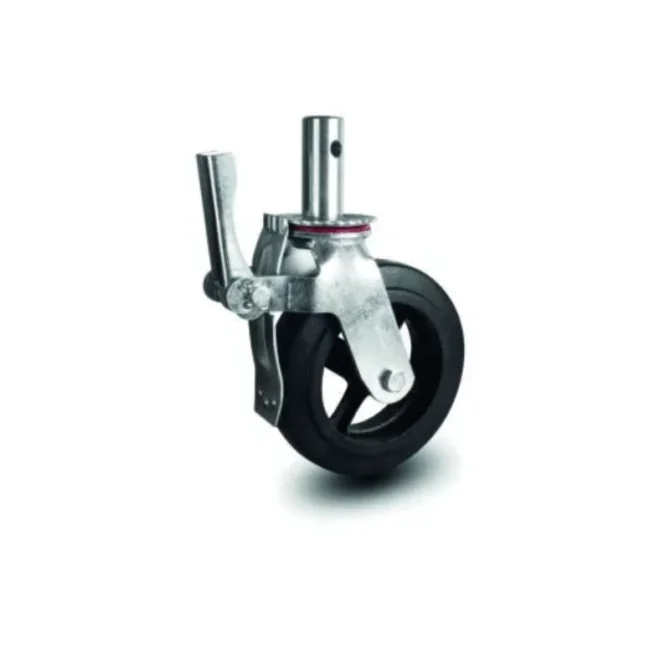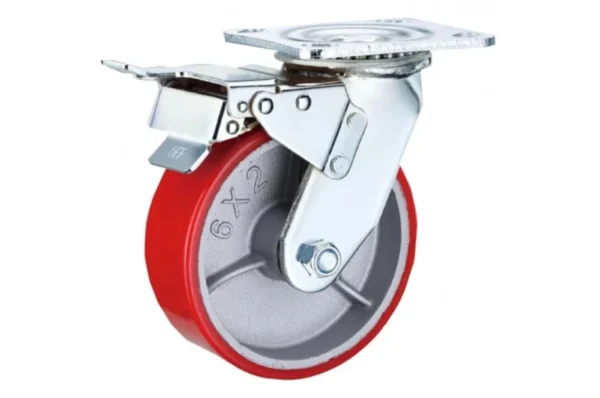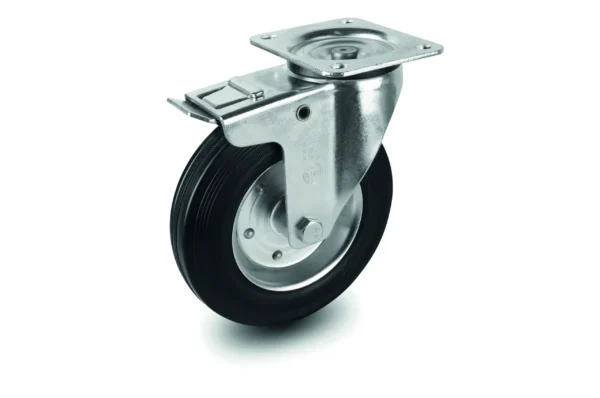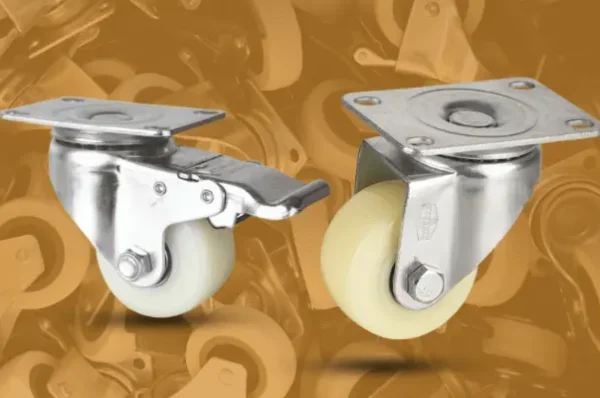Movement is at the heart of productivity, whether in industrial plants, logistics centers, or everyday workplaces. Among the many solutions that make equipment mobile, rubber casters stand out for their balance of durability, smoothness, and adaptability. Unlike specialized wheels designed for extreme loads or harsh conditions, these casters offer a versatile option that works across a wide range of applications, providing both stability and protection for the surfaces they roll upon.
Why Rubber Matters in Mobility Solutions
Rubber is valued for its natural resilience, shock absorption, and ability to provide quiet operation. When applied to caster design, it transforms the way carts, trolleys, and equipment move. Instead of transferring vibrations directly to the load or the operator, the rubber tread cushions movement, making handling safer and more comfortable. This quality is particularly important in workplaces that transport fragile materials or prioritize noise reduction.
At the same time, the use of rubber casters ensures dependable traction. On smooth floors, their grip minimizes slipping, while on slightly uneven surfaces, they adapt without compromising stability. This versatility explains why they have become a common choice across factories, hospitals, and commercial facilities.
Applications in Light and Medium Duty Settings
While heavy industry often demands specialized mobility solutions, countless day-to-day operations depend on lighter equipment. Here, Rubber Wheel Casters prove their worth. Found in medical trolleys, retail displays, and office carts, they offer the right balance between maneuverability and load support. Their ability to roll quietly makes them ideal in settings where constant movement must not disrupt workflow, such as libraries or healthcare environments.
Equally important is the reduced strain they place on floors. Hard wheels may scratch or damage sensitive surfaces, but rubber distributes weight evenly and rolls without leaving marks. This makes them a preferred option in environments where preserving floor quality matters as much as ensuring mobility.
Solid Options for Demanding Conditions
When mobility must be paired with resilience, solid rubber caster wheels are often the solution. These designs remove the risk of air leakage found in pneumatic wheels while retaining the durability and shock-absorbing characteristics of rubber. In warehouses or workshops where carts must move across mixed surfaces, solid models ensure long-term reliability.
Another advantage lies in their low-maintenance design. Unlike air-filled alternatives, solid constructions do not require inflation checks, making them dependable for operations where downtime is not an option. Their robust design supports industrial use while still delivering the quiet and smooth performance rubber is known for.
Supporting Safety and Ergonomics
Mobility in industrial and commercial spaces is not just about speed; it is also about safety and ease of use. By reducing vibrations and rolling resistance, rubber casters lessen the physical effort required by workers to maneuver equipment. This directly contributes to ergonomics, helping prevent strain and fatigue.
In addition, their reliable grip reduces the risk of accidents caused by uncontrolled sliding. Whether used on inclined surfaces or in fast-paced warehouse environments, the steadiness of these casters supports safer operations for both workers and equipment.
Balancing Performance and Cost
The cost-effectiveness of rubber-based solutions leads to their wide adoption. They provide a strong balance of durability and functionality without the higher investment required for specialized caster types. For facilities managing tight budgets while seeking reliable solutions, rubber casters often present the most practical choice.
Maintenance costs are also lower. Their inherent resilience means fewer replacements, and the material’s wear resistance ensures consistent performance over time. This makes them a sensible investment for businesses that value both long-term efficiency and upfront affordability.
Specialized Uses Across Industries
Different industries continue to adapt these casters to their specific needs. In logistics centers, they allow heavy carts to be pushed over long distances without excessive noise. They operate silently in hospitals, thus making the patients comfortable and preserving the mobility of equipment. In retail, they allow displays to be rearranged frequently without damaging floors. The casters are still being modified by the various industries.
In environments where weight capacity is not extreme, one cannot overstate the importance of dependable casters. They serve as the unseen components that keep operations running smoothly, bridging the gap between heavy-duty industrial wheels and more delicate mobility solutions.
Looking Toward Future Developments
The caster technology advances with the change in industries. Developments in rubber-compounding are causing wheels to be much more resistant to wear, chemicals, and temperature. There are also emerging hybrid designs, such as rubber with high polymer, which is even stronger and more flexible.
These advancements demonstrate the increasing realization of mobility as a component of operational efficiency. Automation and robotics change how industries operate, but casters ensure that equipment and goods move freely in spaces.
Conclusion
Rubber casters are worthwhile mobility solutions that industrial plants and commercial offices still use today, as they are versatile and dependable. With power, safety, and the ability to protect floors, they are essential in numerous applications. Whether it be the flexibility of Rubber Wheel Casters or the stability of solid rubber caster wheels, it cannot be denied that rubber-based designs have played a significant role in present-day operations.
At Go Casters, it is all about providing caster solutions to suit the changing needs of the industries around the globe. These designs ensure that efficiency is achieved by matching durability with mobility, and the equipment is not lost, as it needs to be stable and safe, and maneuvering is simple.




